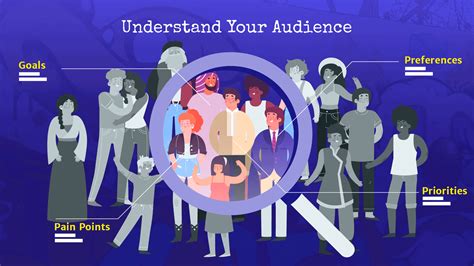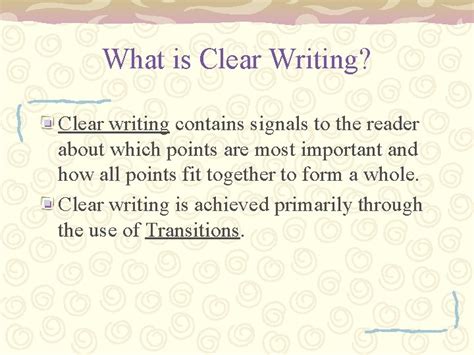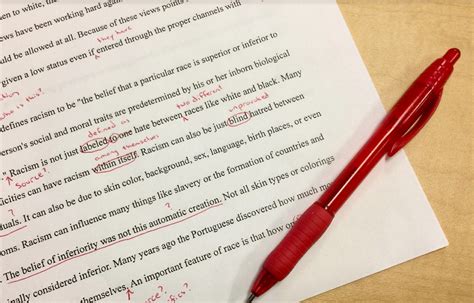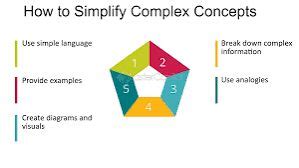In a world overflowing with information, the ability to distil complex concepts into clear, digestible insights is not just a skill – it’s a superpower. Whether you’re explaining scientific research, a new business strategy, or a technical process, your goal should always be to make your message accessible to your intended audience. This doesn’t mean dumbing down the content, but rather presenting it in a way that minimizes cognitive load and maximizes comprehension.
Know Your Audience
Before you even begin to write, take a moment to consider who you’re speaking to. What is their existing knowledge base? What do they care about? What jargon might be familiar to them, and what will leave them scratching their heads? Tailoring your language, examples, and level of detail to your audience’s needs is the foundational step in simplification.
Empathy is your greatest tool here. Step into your reader’s shoes and try to anticipate their questions and potential points of confusion. Avoid making assumptions about their prior understanding; it’s always better to err on the side of clarity.

Break It Down: Chunking Information
Complex ideas often feel overwhelming because they’re presented as a monolithic block. The solution? Break them into smaller, more manageable chunks. Think of your article, report, or presentation as a series of bite-sized pieces, each conveying one primary idea.
Use paragraphs effectively, with each paragraph focusing on a single point. Within sentences, avoid stacking too many clauses. When readers encounter short, focused segments of information, their brains can process and retain it much more easily. This ‘chunking’ strategy reduces cognitive overload and makes the entire text feel less intimidating.

Use Simple Language and Avoid Jargon
One of the most common pitfalls in explaining complex ideas is relying on specialized jargon. While industry-specific terms have their place among experts, they create an immediate barrier for anyone outside that circle. Translate technical terms into plain English whenever possible, or define them clearly and concisely upon first use.
Additionally, embrace active voice and conciseness. Replace verbose phrases with direct, shorter alternatives. For instance, instead of “prior to the initiation of the project,” use “before the project started.” Short sentences, generally between 15-20 words, improve readability significantly. Think about your vocabulary – choose the simplest word that accurately conveys your meaning.

Employ Analogies and Metaphors
Our brains are wired to understand new information by relating it to what we already know. Analogies and metaphors are powerful tools for making abstract or unfamiliar concepts concrete. By comparing a complex idea to something simple and widely understood, you create a mental shortcut for your audience.
For example, explaining a computer’s processor as its “brain” immediately creates a relatable image. A financial market’s volatility could be described as a “rollercoaster ride.” Choose analogies that are genuinely simple and don’t introduce new complexities themselves. The goal is to illuminate, not to confuse further.
Structure for Clarity: Headings, Lists, Visuals
A well-structured document guides the reader through your ideas seamlessly. Use clear, descriptive headings and subheadings (like the H2s in this article) to outline your content and signal what each section will cover. This allows readers to scan the text, find what’s most relevant to them, and understand the hierarchical flow of information.
Bullet points and numbered lists are invaluable for presenting sequential information, steps in a process, or distinct features. They break up large blocks of text and make key information stand out. While we’re not generating actual images here, consider how charts, graphs, diagrams, and infographics can visually represent data and relationships, offering an alternative path to understanding that text alone cannot provide.

Edit and Refine: The Power of Revision
The first draft is rarely the clearest. Simplification is often an iterative process. Once you’ve written your piece, step away from it for a while and then return with fresh eyes. Read it aloud to catch awkward phrasing or overly long sentences. Ask yourself: “Could this be explained more simply?”
Consider using readability tools (like the Flesch-Kincaid test) to get an objective measure of your text’s complexity. Better yet, ask a colleague or a friend who isn’t familiar with the topic to read your work. Their feedback will be invaluable in identifying areas where your explanation falls short or where jargon has crept back in. Be ruthless in cutting unnecessary words and redundant phrases.

Simplifying complex ideas is an ongoing practice, but one that yields significant rewards. By knowing your audience, breaking down information, using plain language, employing analogies, structuring clearly, and diligently refining your work, you empower your readers. You don’t just share information; you build understanding, foster engagement, and ultimately, make a greater impact with your message.




